Final Assembly: How It Comes Together
The Last Steps in Creating a Sculptural Watercolour
"This is where everything comes together—the cutting, shaping, and layering. It’s a delicate process where even the smallest misalignment can change the whole effect."
— Prue Bishop
Sculptural watercolour isn’t just about painting—it’s a meticulous construction process. Once the initial painting and layering are complete, the final assembly determines the structure, depth, and overall impact of the piece.
1️⃣ From Flat Sheet to 3D Landscape
Unlike traditional watercolours, where a painting is complete once the brushwork is finished, sculptural watercolour requires a transformation from 2D to 3D.
✔ The base painting is cut along natural lines—following the shapes of mountains, ice, or architecture.
✔ Each cut section is raised to add physical depth and shadowing.
✔ Structural reinforcements ensure longevity and stability.
Example: Chillon Castle’s Overhanging Structures
Prue had to create a perspective where the viewer looks down from a high vantage point while maintaining realistic depth. This required precise cutting and layering to make certain sections extend outward while receding correctly in the distance.
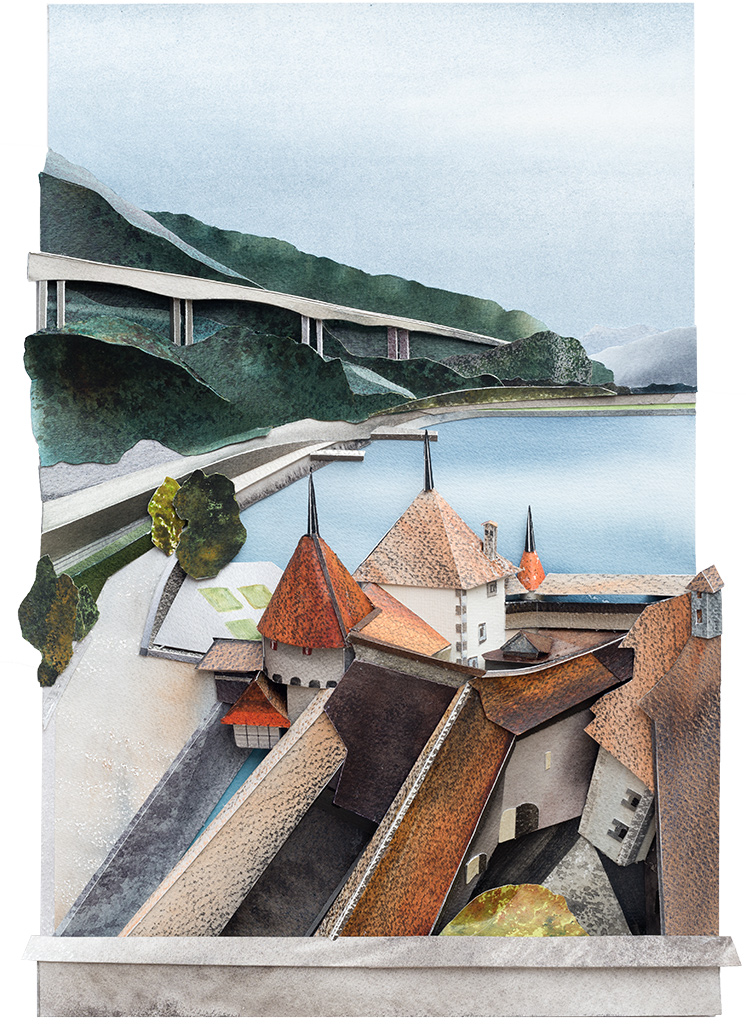
2️⃣ Cutting & Shaping: The Precision Stage
Every sculptural painting goes through a delicate cutting and shaping phase, ensuring that elements rise or recede exactly as they should.
✔ Fine craft knives & scalpels are used to cut along painted edges.
✔ Scoring techniques help create natural folds and angles.
✔ Layering is calculated to balance depth and realism.
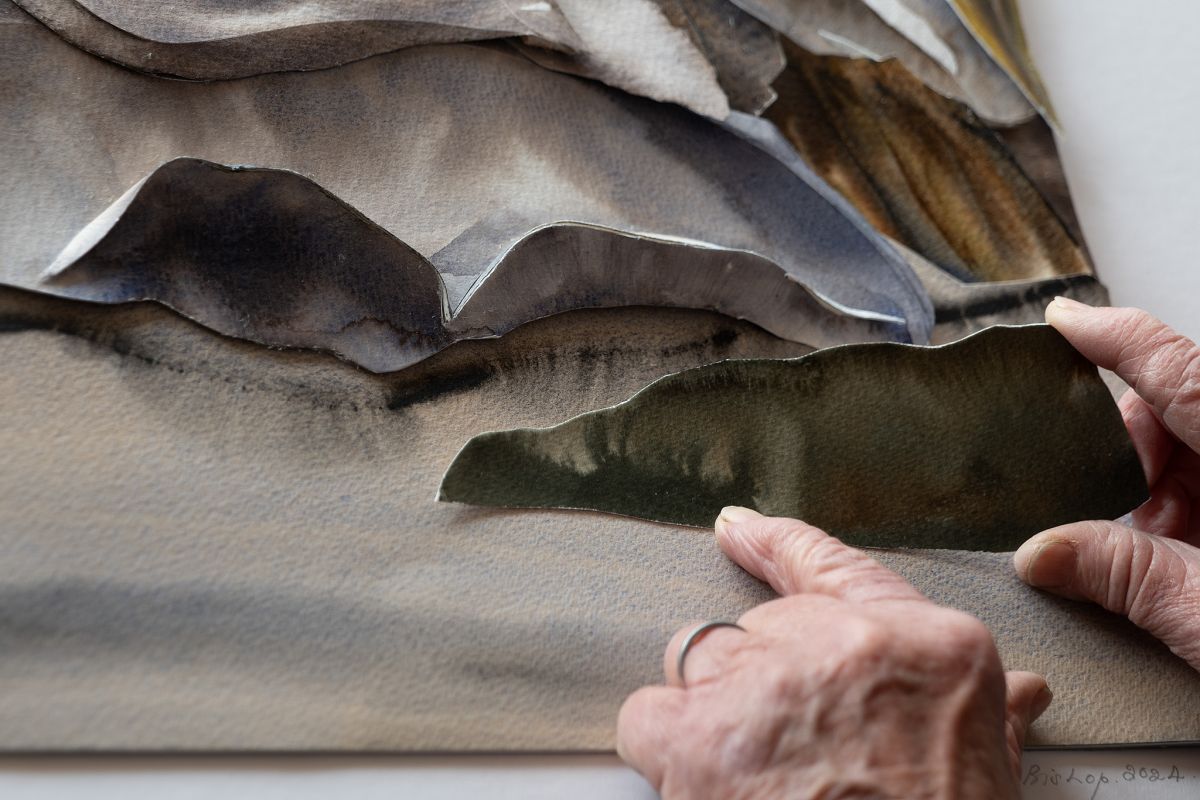
3️⃣ Layering for Depth & Realism
Once individual pieces are cut, they must be stacked and spaced correctly to create the illusion of depth.
✔ Some layers sit flush while others float above the background.
✔ Strategic shadow placement enhances perspective.
✔ Multiple layers work together to guide the viewer’s eye through the scene.
Example: Multi-Layered Peaks in a Mountain Scene
In landscapes with multiple mountain ridges, layering is key. Some peaks are raised more than others, creating the illusion of distance. By carefully positioning layers, Prue ensures that the viewer feels the depth of the scene.
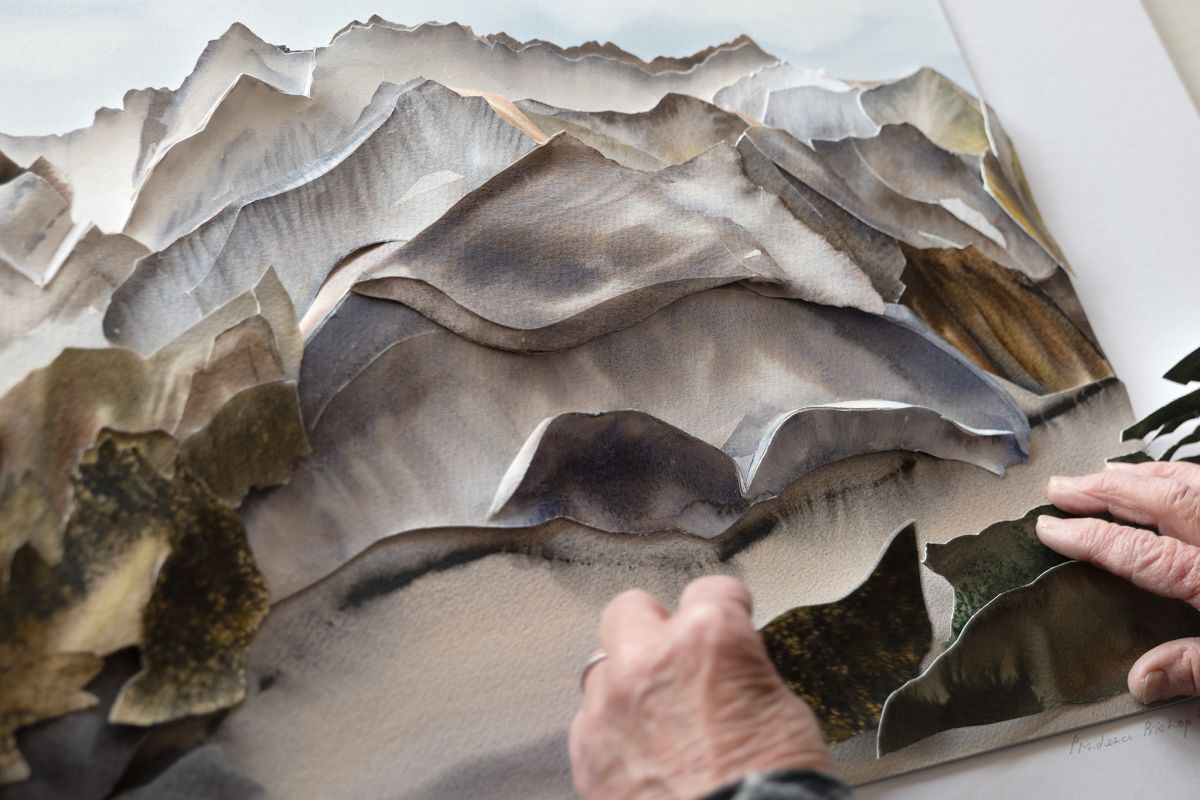
4️⃣ The Structural Backbone: Supports & Reinforcements
Because sculptural watercolours are raised beyond a flat plane, they need hidden supports to maintain stability.
✔ Balsa wood beams prevent sagging and distortion.
✔ Toblerone-style folded cardboard reinforcements hold layers in place.
✔ Glue application is precise to ensure clean joins without visible marks.
Example: The Engineering Behind a Fragile Ice Arch
In a painting of a delicate ice formation, Prue had to reinforce the raised sections without making them look bulky. She used hidden triangular beams underneath the painting’s surface to distribute the weight while maintaining a seamless look.
💡 "The weight of the artwork is always at the front, where the most shaping happens. The supports hold everything together."
5️⃣ The Challenge of Framing a Sculptural Watercolour
Framing as a Structural Necessity
Framing has historically served both aesthetic and protective purposes. While traditional framing embellishes an artwork, the arrival of watercolour in the 19th century introduced glass as a necessary protective element.
For Sculptural Watercolours, framing is even more critical—not just for protection but as an integral structural component of the work itself. The wooden frame holds the sculptural forms securely in place, ensuring the dimensional aspects remain stable and intact.
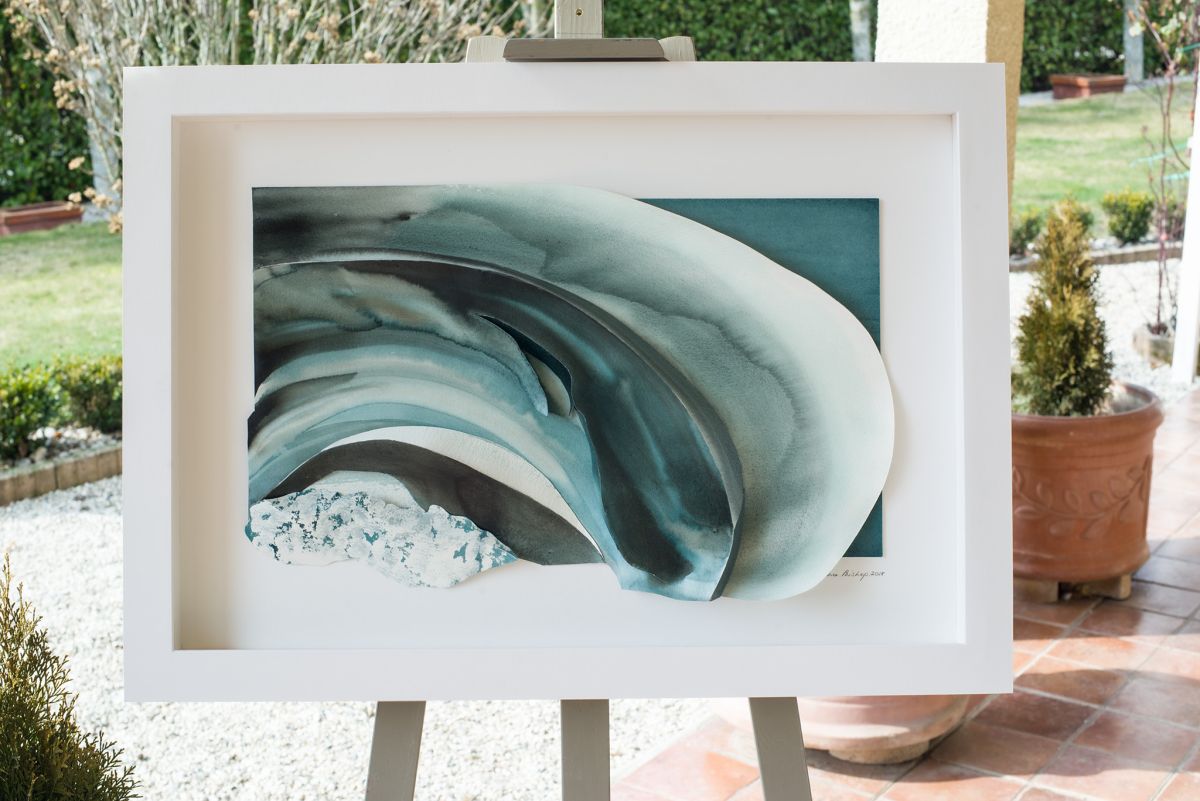
A Custom Approach for Every Artwork
Each artwork evolves differently, meaning no two frames are the same. Throughout the creative process, the depth of the sculpted elements dictates the final frame construction.
Key considerations include:
✅ Glass positioning – ensuring sufficient depth between the artwork and the protective glass.
✅ Mount width – selecting a proportional upper mount to stabilize the artwork within the frame.
✅ Frame structure – ensuring the wooden base is strong enough to support the sculpted layers.
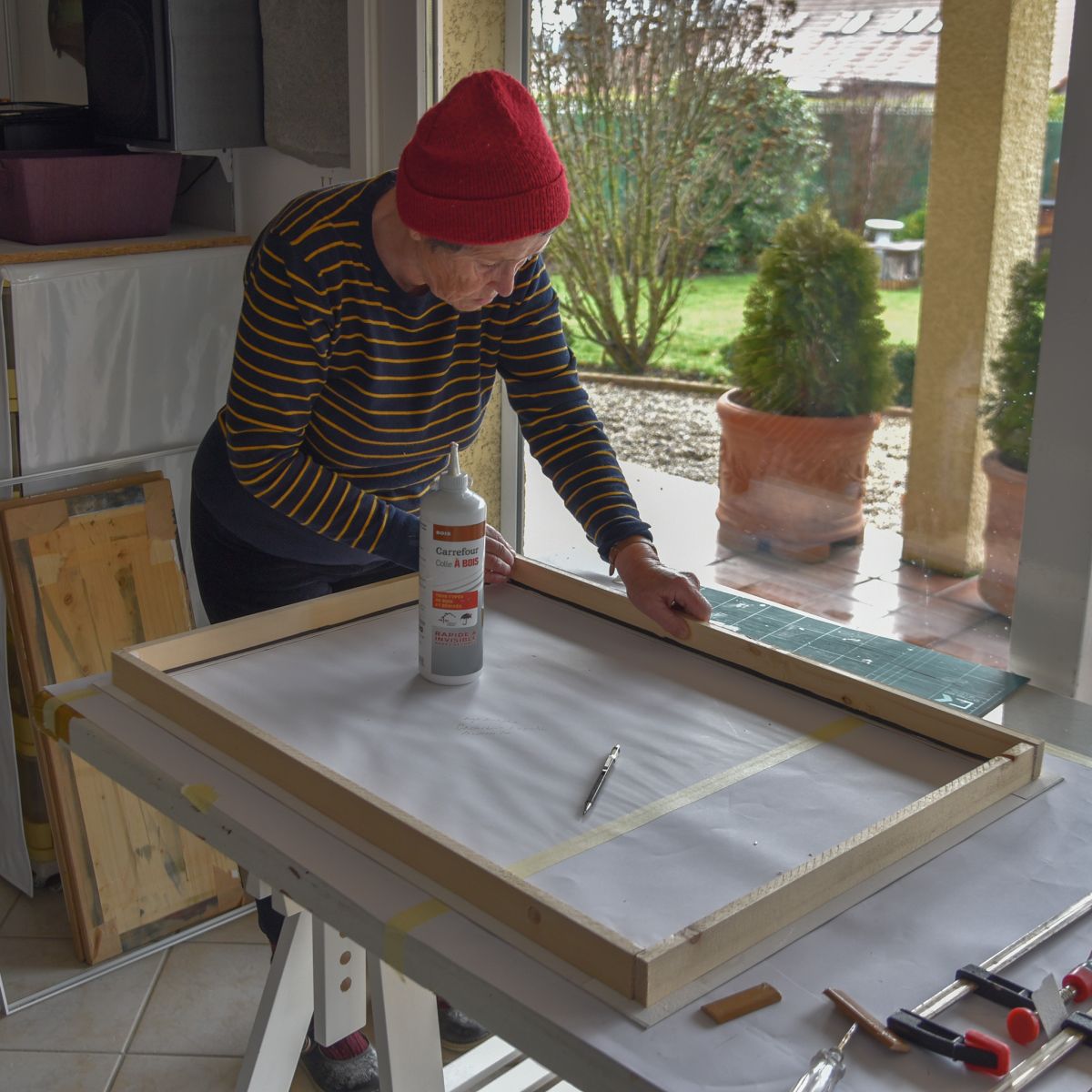
Step-by-Step: How a Sculptural Watercolour is Framed
1️⃣ Creating the Foundation – A mount board with a high-quality ‘laid’ texture is selected as the backing surface. Unlike regular cardboard, this provides both aesthetic refinement and structural integrity.
2️⃣ Building the Frame – A wooden frame is assembled, designed to hold both the sculptural elements and the front protective glass. The front mount is carefully glued to the frame edges.
3️⃣ Final Positioning – The painting is placed on the mount board, and additional mount strips are used to refine the edges, creating a cohesive structure.
4️⃣ Sealing & Securing – The metal frame and glass are added, held in place with steel clips. The back is sealed with gummed brown tape, ensuring durability and dust protection.
Adjustability & Longevity
Unlike traditional framing, these frames are designed to be disassembled if necessary. This allows for glass replacement in the event of breakage or damage, without compromising the artwork.
In some cases, a contrasting back mount is used to enhance depth and contrast, making the sculptural elements stand out even more.
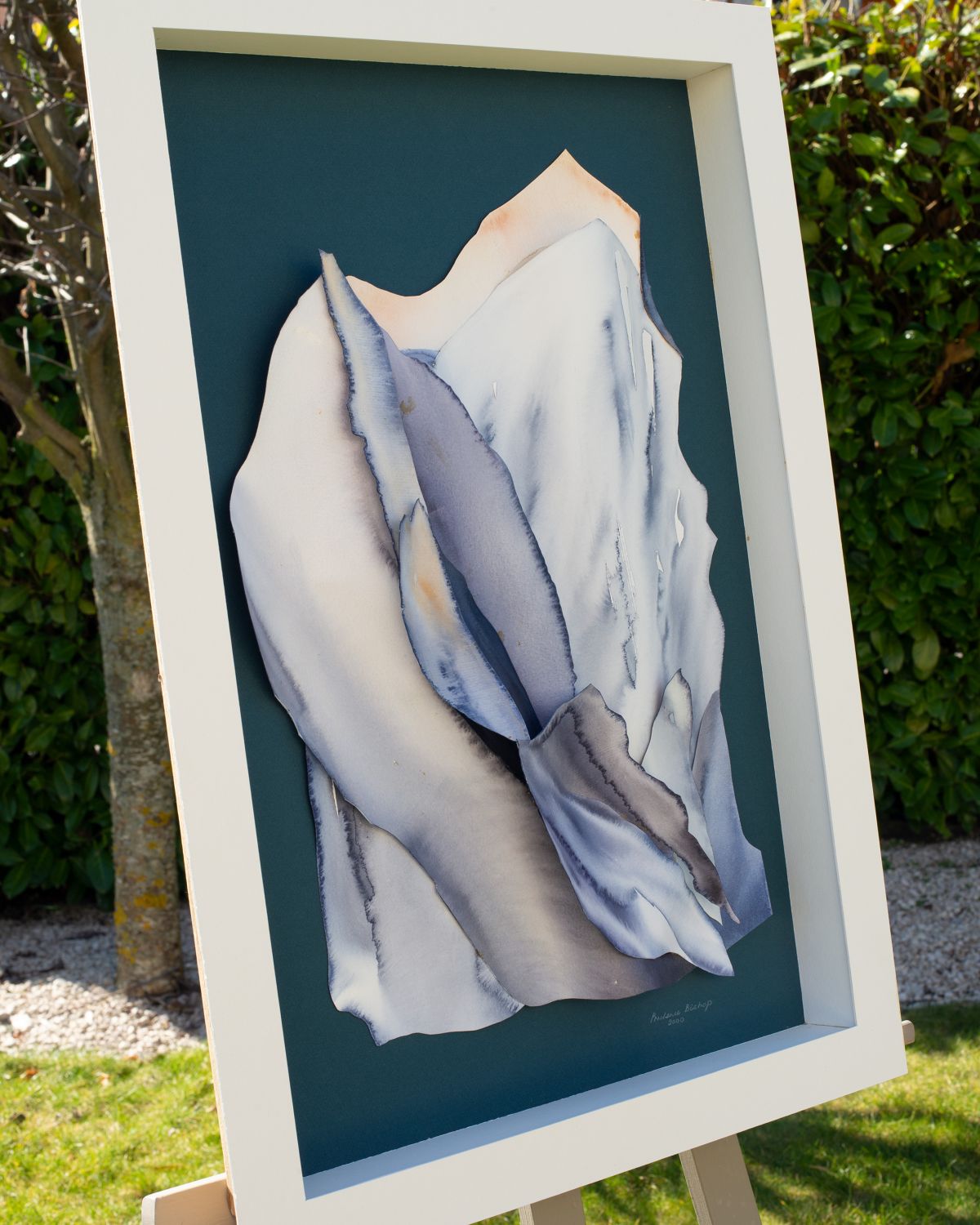
6️⃣ The Final Touch: Ensuring Longevity & Authenticity
Every painting is built to last for generations, using the same time-honored materials and techniques that have stood the test of time.
✔ Gum Arabic preserves the paint, ensuring it won’t flake or fade.
✔ All materials are archival quality, preventing deterioration.
✔ Each piece is signed & documented to confirm its authenticity.
Example: Why the First Painting Ever Made Still Looks the Same
Prue’s first sculptural watercolours, made 25 years ago, have not changed at all. The materials and techniques used were so precise that the painting remains exactly as it was created, proving the durability of the process. Here is an example from 2000 illustrating how the colours and shapes have withstood the test of time.
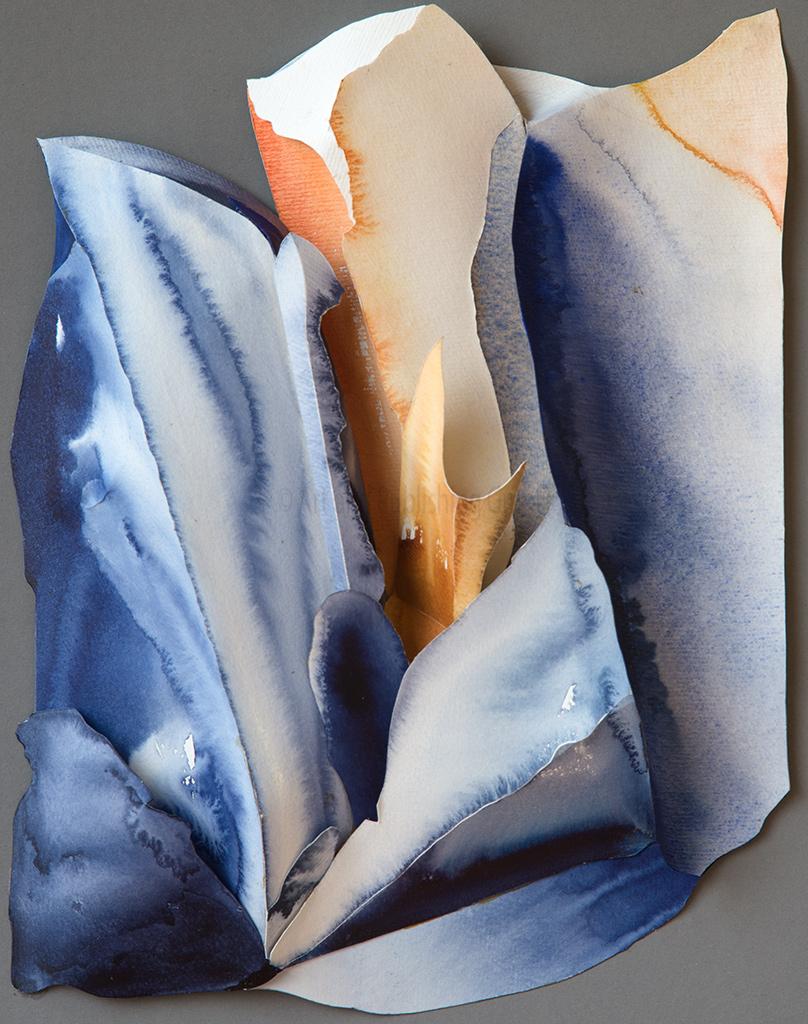
💡 "For twenty-five years, I have never had to change my process. The first painting I ever made still looks exactly the same."
Conclusion
The final assembly of a sculptural watercolour is where engineering meets artistry. Every cut, layer, and structural element contributes to an artwork that blends traditional painting with modern dimensionality.
✅ See the Next Step—Environmental Themes & Global Warming
✅ Browse the Full Collection of Sculptural Watercolours France, Switzerland, Global Warming